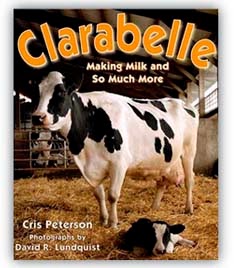April is National Poetry Month, providing TRC volunteers with a great excuse to delve into the world of children's poetry.
In addition to being different than the norm and therefore more likely to spark interest, children's poems have the plus of being short and often spaced widely on the page. The language used is usually repetitive, rhyming and unusually vivid. This (and the fact that there are poems written on nearly every subject you can imagine!) will appeal to all of the kids at your Read-Aloud.

Shel Silverstein's poetry is tried and true. Pick up a copy of the Silverstein classics, A Light in the Attic, Where the Sidewalk Ends or Falling Up. Shel is one of the few authors for kids to merit a posthumous collection, Everything On It (2011). His poetry makes great use of off-kilter or made-up words, plays on word meanings and onomatopoeia.
Jack Prelutsky, the United States' first ever Children's Poet Laureate, is another favorite. Try The New Kid on the Block or Be Glad Your Nose Is on Your Face.
For a sample of what you're in for, here's an excerpt from a poem of Prelutsky's entitled "As Soon as Fred Gets Out of Bed"
As soon as Fred gets out of bed,
his underwear goes on his head. His mother laughs, "Don't put it there, a head's no place for underwear!" But near his ears, above his brains, is where Fred's underwear remains.
For older kids at your Read-Aloud, try Jabberwocky, illustrated by Christopher Myers. This urban sports spin on the Lewis Carroll classic will surely get the kids talking. Hip Hop Speaks to Children, edited by Nikki Giovanni, may appeal to the older crowd as well.
Of course, Poetry Month lends itself as much to activities as it does to reading ideas. Before you start reading, ask the kids what they think a poem is -- you'll be surprised at how many people can't answer this question!
 |
| Lists of rhyming words created by the Sullivan House kids and volunteers. |
Talk about rhyming and make a group list of words that rhyme. Use a white board, chalk board or flip chart. Start with a simple word and write down all the words that rhyme with it. Pick a few lines from your favorite kid's poem and clap your hands as you say them out loud to give everybody an idea of what meter is without even mentioning the term!
After reading as many poems as you and your audience can handle, put them to work writing their own! Have the kids work individually or in pairs to write poems on a subject that everybody knows about, like a favorite food or outdoor place. Here are some tips about writing poetry about gardens you could adapt for your Read-Aloud.
If the kids in your Read-Aloud are younger, write a poem or a story in a group. Pick a subject and have each child add one word that you write on a big sheet of paper in front of everyone. Jack Prelutsky's website offers more ideas for poetry activities, including How to Write a Funny Poem.
If you usually read storybooks at your Read-Alouds, the switch to poetry could be welcome! Take this month as an opportunity to shake things up and get silly with the combination of children's poetry and children.
Post by The Reading Connection intern Anna McCormally.
To receive credit for this online training, please fill out the form here.



















